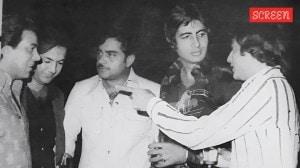God’s own saints
A number of clergy from central Kerala await sainthood, but the process of canonisation can take centuries

After Sister Alphonsa, who will be declared the first woman Catholic saint from India on October 12 at the Vatican by Pope Benedict XVII, a dozen clergy from Kerala, God’s Own Country, are going through the long-winding process of canonisation before being finally elevated to the altar of sainthood. Sister Alphonsa and a majority of others waiting in line for sainthood hail from central Kerala’s Kottayam district.
Prominent among those who are a step closer to attaining sainthood is Elias Kuriankose Chavara. The priest was declared ‘Blessed’ along with Sister Alphonsa in 1986. Others in the category of the ‘Blessed’ are Sister Euphrasia, Sister Mariam Thresia Mankidiyan and Father Augustine Thevarparambil. A step below the ‘Blessed’ are the ‘Servants of God’. Bishops Mathew Kavukattu, Thomas Kurialassery and Ivanios fall under this category, as do nuns Rani Maria and Celine. Priests Mathew Kadalikkattu, Joseph Vithayathil and Zacharias are the other ‘servants of god’ from the state.
Father Auralian, another candidate for sainthood, falls in the ‘Venerable’ category — a stage between the ‘Blessed’ and the ‘Servant of God’. Zacharias and Auralian were Spanish missionaries who lived and died in Kerala.
Except Fr Chavara and Sister Rani Mariya, all others lived in the first half of the 20th century.
Sister Alphonsa and Fr Thevarparambil lived in the neighbouring villages of Bharananganam and Ramapuram, respectively, in Kottayam. Sister Celine lived in the communist citadel of Bernassery in north Kerala’s Kannur district. She died at the age of 26 in 1957.
Conferring sainthood to a Catholic is a long process. First, the demand for initiating the process should come from within the local community, which should establish that the candidate lived a saintly life amidst them. If the demand merits attention, the local diocese constitutes a special body to look into the life of the candidate. If they find that the prospective saint is worth proceeding with, the diocese presents the case at the Congregation for the Cause of Saints in Rome. If the Vatican is convinced, it confers the title of ‘Servant of God’ on the candidate.
Then the real process begins. A postulator — a church official who oversees the canonisation process — must prove that the candidate lived by Christian virtues. Documents and testimonies are collected and presented to the Vatican Congregation.
In the next stage, the ‘Servant of God’, if found to be virtuous enough, is declared ‘Venerable.’ At this juncture, the postulator has to prove that a living person received a miracle from God through the intervention of the ‘Servant of God’. If this is done, the candidate is declared ‘Blessed’ by the Vatican.
During the ‘Blessed’ period, proof of another miracle caused by the intervention of the candidate must be established. If this is done, the ‘Blessed’ is declared a saint.
According to Syro-Malabar Church spokesperson Father Paul Thelakkattu, the process of canonisation can be started five years after the death of a person. Though both Sister Alphonsa and Father Chavara were declared ‘Blessed’ on the same day in 1986, only the nun has attained sainthood so far. An initiated process of canonisation could run to several centuries, he said.
Meanwhile, 10,000 people are expected to participate in the canonisation of Sister Alphonsa at the Vatican on October 12. The official delegation is being led by Union Minister Oscar Fernandes and the Government of Kerala will be represented by Public Works Minister Mons Joseph.
- 01
- 02
- 03
- 04
- 05































